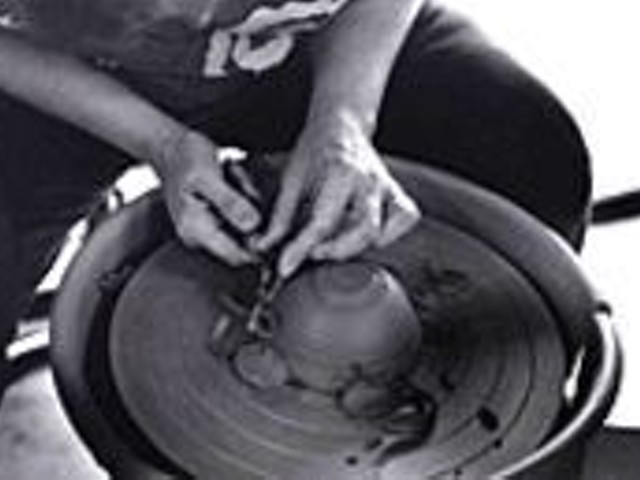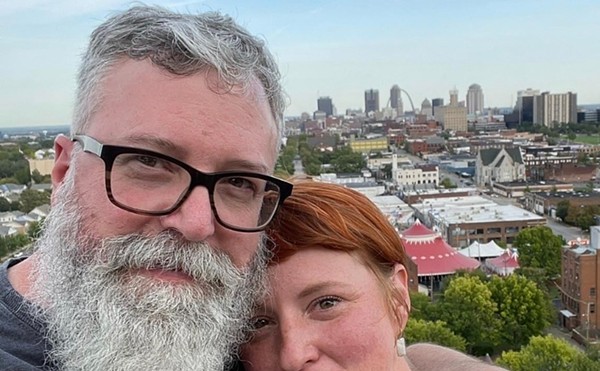For this exhibit, the painter holed up in his bakery-turned-studio on the South Side and worked on more than twenty pieces simultaneously. He can do that, he explains, by treating painting as you would music. "They all progress, so it's like a body of work -- not unlike, maybe, producing an album," says Raedeke. These paintings are done on medium-density fiberboard panels, some with images that started out humbly as clip art from an Italian phone book, drawings and digital pictures and movies. "The images in the drawings are distilled over a period of time; they start out complex," he explains. "My work, I guess, is all about distilling experience, or 'logo-izing' our lives."
Appropriately enough, Raedeke is showing his logo-simulating work in Kroma's retail environment, and with his own slogan, too. "A Better Future for You" is his watchphrase, according to the artist's press materials. In truth, Raedeke is low-key about what he calls "packaging experience" in his art: "I like it to be more throwaway," he says. "I don't like to be so precious about each piece, or it loses spontaneity, like posters or pop songs or something. That's the way I approach it."
Some of his most intriguing works are merely paint itself. These texturized cast pieces are latex paint built up layer by layer, creating a dot-matrix, bubblelike vibe. He characterizes these as "just as minimal as you can get, and they really speak to a digital quality -- yet they're totally hand-made; they're totally physical." Some of his paintings aren't even meant to hang; instead, these double-sided pieces are fitted into stands. Raedeke describes these works as being almost like "design furniture," which helps explain his affinity for Kroma.
Kelly, who says he feels it's important to support local artists such Raedeke, has mounted many such shows at Kroma. "By finding artists when they're young," he adds, "we've always had a philosophy that we like to have pieces that just about anybody can afford." In addition to showcasing art, the new Kroma will host exhibits by St. Louis-based designers who create furniture, interiors, architecture and graphic and fashion design, in addition to providing a home for a lecture series and continuing its support of the local electronic-music scene. Kroma's new location and new agenda may just mean a "better future" for local artists and functional designers, indeed.





